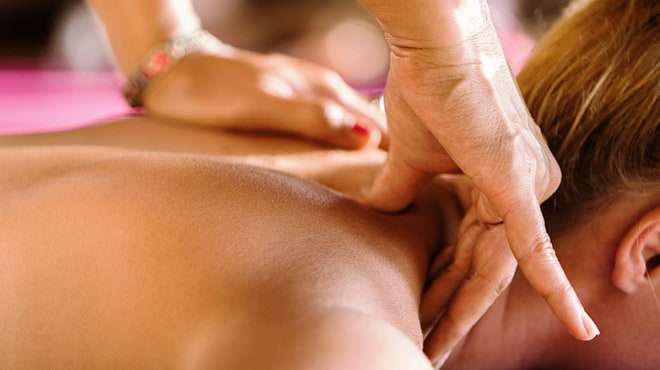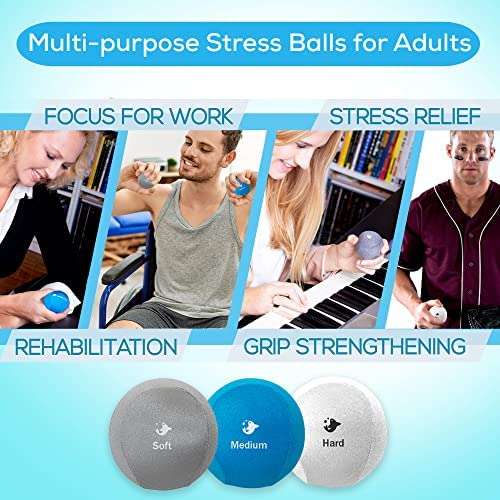Stress is an inevitable part of life. It is nearly impossible to remove all stress from day-to-day life. Stress is physiological and psychological responses to situations the body and mind find to be overwhelming.
Even situations perceived as good, like getting married, starting a new job or becoming a parent, can produce significant stress. When people struggle to cope with stressful situations, depression and anxiety symptoms can become more noticeable.
Massage therapy is one of many ways to cope with stress, and treat anxiety and depression.
Some people mistakenly believe that massage therapy is only for pampering yourself. While this is true for some people, it also helps manage anxiety, depression and insomnia.
Physical benefits of massage
A massage does more than just feel good. It can lower the amount of cortisol in your body. This hormone is produced when your body is stressed. It increases glucose in your bloodstream, enhances your brain’s use of glucose and curbs functions that are nonessential in a fight-or-flight situation.
A one-hour massage lowers cortisol in your body while also releasing serotonin. This hormone neurotransmitter is sometimes called the “happy chemical” because it reduces feelings of depression and carries signals between nerves and your body. By lowering cortisol and increasing serotonin, you’re boosting your body’s ability to fight off pain, anxiety and feelings of sadness.
Also, massage could be considered an hourlong hug, as it can fulfill the need for human contact and comforting touch. A session provides you with a nurturing safe place to physically rest.
Emotional benefits of massage
Massage provides many emotional benefits, which can be just as important as the physical benefits. Many people say that after a massage they feel more relaxed and calmer. It a safe and nurturing place for people to refocus and find clarity.
Massage can lower stress levels and feelings of anxiety. It can improve mood and relaxation while increasing confidence and self-image.
If you experience depression or anxiety, or are just overloaded with extra stress, massage can be an effective part of treatment. It can create a sense of relief and empowerment, and allow you to focus on your mind-body connection.
Massage therapists listen to your needs and concerns. They can develop a treatment plan to decrease stress and symptoms of anxiety and depression. Sessions range from 15 to 90 minutes in length. Therapeutic massage may help support you on your mental health journey.
Massage alters EEG activity, increases parasympathetic activity, and decreases cortisol levels
Massage is widely used in all cultures to evoke feelings of deep relaxation and reduced anxiety. The anxiety-reducing and mood-enhancing benefits of massage are probably related to changes in EEG activity, decreased levels of cortisol, and increased activity of the parasympathetic nervous system, which acts automatically to calm the body and brain during stress.
Numerous studies show that moderate pressure massage is more effective than light pressure massage for reducing pain associated with different medical problems including fibromyalgia and rheumatoid arthritis. Moderate pressure massage also improves attention and enhances the body’s immune response by increasing the activity of natural killer cells. Functional brain imaging studies show that changes take place in many areas of the brain involved in regulating emotions and stress response including the amygdala and the hypothalamus. For an excellent review of the research evidence for massage therapy see “Massage Therapy Research Review” by Field (Field 2014).
Challenges to designing studies on massage
It is difficult to examine the beneficial effects of massage therapy using contemporary research methods because it is impossible to design a double-blind study in which the person receiving massage therapy is “blinded” to treatment. Also, the physical and psychological benefits of massage are difficult to quantify in controlled trials. Findings of many studies are limited by the absence of a sham control group i.e., a group treated by someone who poses as a massage therapist but has no training. The situation is further complicated by the fact that few massage therapists are trained in research methods or work in institutional settings where sham-controlled trials can be conducted.
Massage is widely used for anxiety and has a strong record of success
In spite of the paucity of published research evidence, regular massage is a widely used technique in many cultures to treat chronic stress and anxiety and deserves serious consideration. Consistent anecdotal evidence, a long history of widespread use of massage for stress reduction, and positive findings of open trials support the view that regular massage therapy reduces the severity of chronic moderate anxiety in general, and specifically when anxiety is related to test-taking or problem-solving, work stress or the anticipation of invasive medical procedures.
In my own clinical experience working with patients who complain of chronic stress, test-taking stress, and generalized anxiety, regular massage therapy effectively reduces anxiety, improves emotional resilience, and enhances feelings of general well-being in anxious patients.
Few safety issues
Massage is safe when done by a trained therapist, seldom resulting in injuries. However, individuals who have chronic pain disorders or other medical conditions that involve the musculoskeletal system should consult with their physician before receiving regular massage therapy.
What Is Therapeutic Massage?
Therapeutic massage is a type of complementary and alternative medicine (CAM) practice that is often used to treat muscle pain, injury, and stiffness. Massage therapy has also been used for the treatment of mental and emotional problems, including stress, anxiety, and depression.
Also considered a relaxation technique, massage therapy may be able to help reduce tension and elicit feelings of calm and deep relaxation. Additionally, massage may be able to curb feelings of fear and anxiety and assist in managing other panic disorder symptoms.
CAM practices have grown in popularity and are often used in combination with more traditional medical practices. Some other common CAM practices include acupuncture, yoga, and aromatherapy.
Types of Therapeutic Massage
There are many different kinds of massage offered by massage therapists. Depending on the style, massages often vary in pressure and muscle group focus. Some of the most common types of massage include:
- Swedish massage: Swedish massage is the most popular type of massage therapy and is meant to help relax the body and mind. It involves a total body massage where a person lies on the massage table while the massage therapist slowly works through different muscle groups. Swedish massage also helps circulate blood flow, relieve mental stress, and reduce muscle pain and tension.
- Deep tissue: In deep tissue massage, the massage therapist uses more pressure and intensity when working through the muscles. The massage is aimed at releasing tense and painful muscle knots that are often associated with physical discomfort, stress, and headaches.
- Sports massage: Often used by athletes, sports massage is used to assist in athletic training. This type of massage is focused on preparing muscles for intense training. Additionally, sports massage is used to help the muscles recover after intense performance or injury.
- Shiatsu: Frequently referred to as acupressure, Shiatsu is a form of massage that is similar to acupuncture. Shiatsu originated in Japan and means “finger pressure.” Instead of using needles like acupuncture, the practitioner uses their fingers on pressure points. Pushing these points is thought to help release energy and restore balance back to the body and mind.
Techniques
Massage therapy involves manipulating the muscles by kneading, rubbing, pressing, or patting different muscle groups. Some of the techniques used include:
- Effleurage: This involves light or deep strokes intended to help relieve tension and induce relaxation.
- Petrissage: This technique involves kneading muscles and can be helpful for relieving muscle tightness or spasms.
- Tapotement: This involves tapping or cupping the skin to create a percussion effect.
- Friction: In this technique, the massage therapist applies small, circular, focused pressure to specific points on the body.
Massage therapists use their hands, forearms, and even elbows to work through various groups of muscles. Some massage therapists will also include aromatherapy oils and tranquil music to help create a peaceful and deeply relaxing experience.
What Therapeutic Massage Can Help With
Therapeutic massage is often used to help relieve muscle tension and pain. It may be used on its own, but it is also often used in conjunction with other traditional pain treatments. Therapeutic massage may also be helpful for helping people deal with symptoms of conditions including:
- Anxiety
- Depression
- Digestive disorders
- Fibromyalgia
- Headaches
- Insomnia
- Panic disorder
- Stress
Therapeutic massage can help reduce muscle tension, which is why it may help relieve some symptoms that are associated with stress and anxiety.
Benefits of Therapeutic Massage
Massage therapy can help the body relax, which in turn can help you let go of anxious and fearful thoughts. Massage can relieve muscle pain and tension, improve circulation, and increase flexibility. As a relaxation technique, massage therapy can work to help manage the fight-or-flight response, or stress reaction, that is typically overactive among people with anxiety disorders.
The fight-or-flight reaction is responsible for causing fearful thoughts and reactions that often far outweigh any actual threat in the environment. For example, people with agoraphobia often fear having a panic attack in a large crowd or a confined area where it would feel embarrassing or be difficult to escape.
The fight-or-flight reaction commonly leads to uncomfortable physical symptoms, such as shortness of breath, accelerated heart rate, excessive sweating, and chest pain. Massage therapy can have an opposing effect on the body by eliciting the relaxation response, reducing tension, lowering heart rate, and generally making a person feel calmer.
Physical Benefits
-
Less muscle pain and tension
-
Improved circulation and flexibility
-
Lower heart rate
Mental Benefits
-
Fewer anxious thoughts
-
Tamed fight-or-flight response
-
Lower tension and more feelings of calm
Effectiveness
There is evidence suggesting that massage therapy may be an effective adjunctive treatment for conditions such as depression and anxiety. For example:
- One study found that massage therapy was an effective, non-invasive, and cost-effective way to help reduce symptoms of pain, anxiety, and depression among people with cancer.
- Another study found that people with generalized anxiety disorder (GAD) who used therapeutic massage experienced significant decreases in symptoms. However, these improvements were roughly the same as those experienced by people in other relaxation-based treatments, suggesting that inducing a relaxation response is generally beneficial in those with GAD.
- A 2018 review of the research found that the current data suggest there is at least some benefit for therapeutic massage as an adjunctive treatment for anxiety and depression. The authors of the study suggest that because such treatments are popular, a collaborative approach that incorporates traditional therapies with therapeutic massage may be beneficial for those experiencing psychiatric conditions.
Things to Consider
Generally, massage therapy only has a few potentially adverse side effects. Many people experience some soreness throughout their body the first few days following a massage.
However, you should never feel pain or discomfort during or after a massage. Massage is also contraindicated for certain medical conditions. Always consult your doctor before getting a massage if you are unsure if it’s right for you.
Studies have supported the safety and effectiveness of utilizing massage therapy for stress, anxiety, and depression—but if you are experiencing panic attacks and other symptoms of panic disorder, talk to your doctor before trying this or other CAM therapies.
Your doctor will be able to assist you with conventional treatment options, such as medication and therapy. Massage may be beneficial in helping you manage your condition but is not a substitute for traditional medical care. Massage therapy may be incorporated into your standard treatment plan to assist you in coping with your symptoms.
How to Get Started
Massage therapy is offered at many spas, salons, and wellness centers. However, as it continues to become a more mainstream treatment option for physical and mental health concerns, massage is now offered at many hospitals and clinics as well. Some insurance companies even cover massage therapy services.
When meeting with your massage therapist for the first time, make sure to discuss your medical history, including any mental health symptoms.
It is important to schedule these services with a licensed or certified massage therapist. This ensures that you will get treatment from a qualified practitioner who has followed the standards and requirements for their state licensure.
Licensed massage therapists can be found through website directories, including the National Certification Board for Therapeutic Massage & Bodywork and the American Massage Therapy Association. Let the massage therapist know if you have any specific areas of concern and be sure to discuss what you hope to get out of the massage, such as muscle or stress relief.




